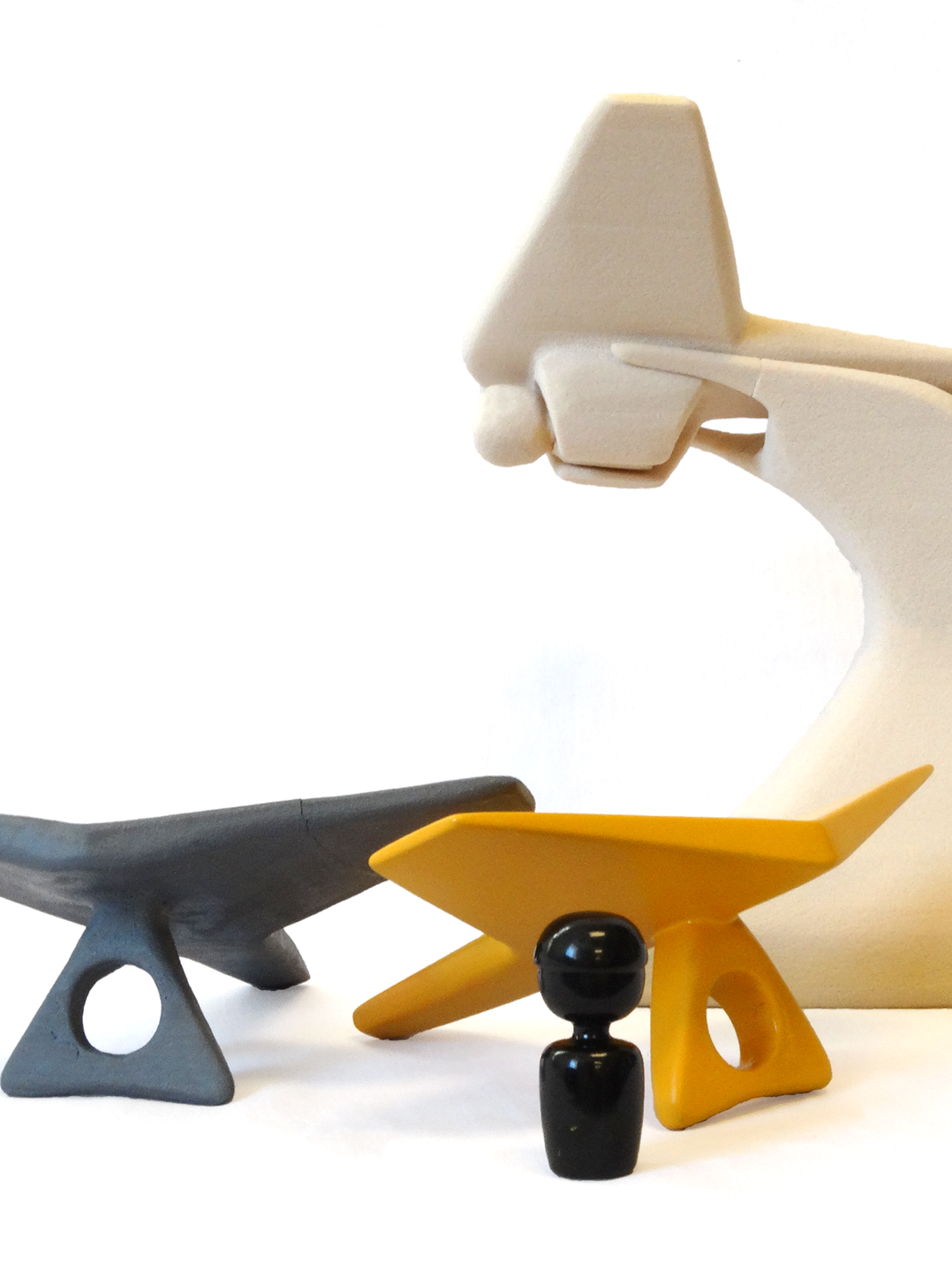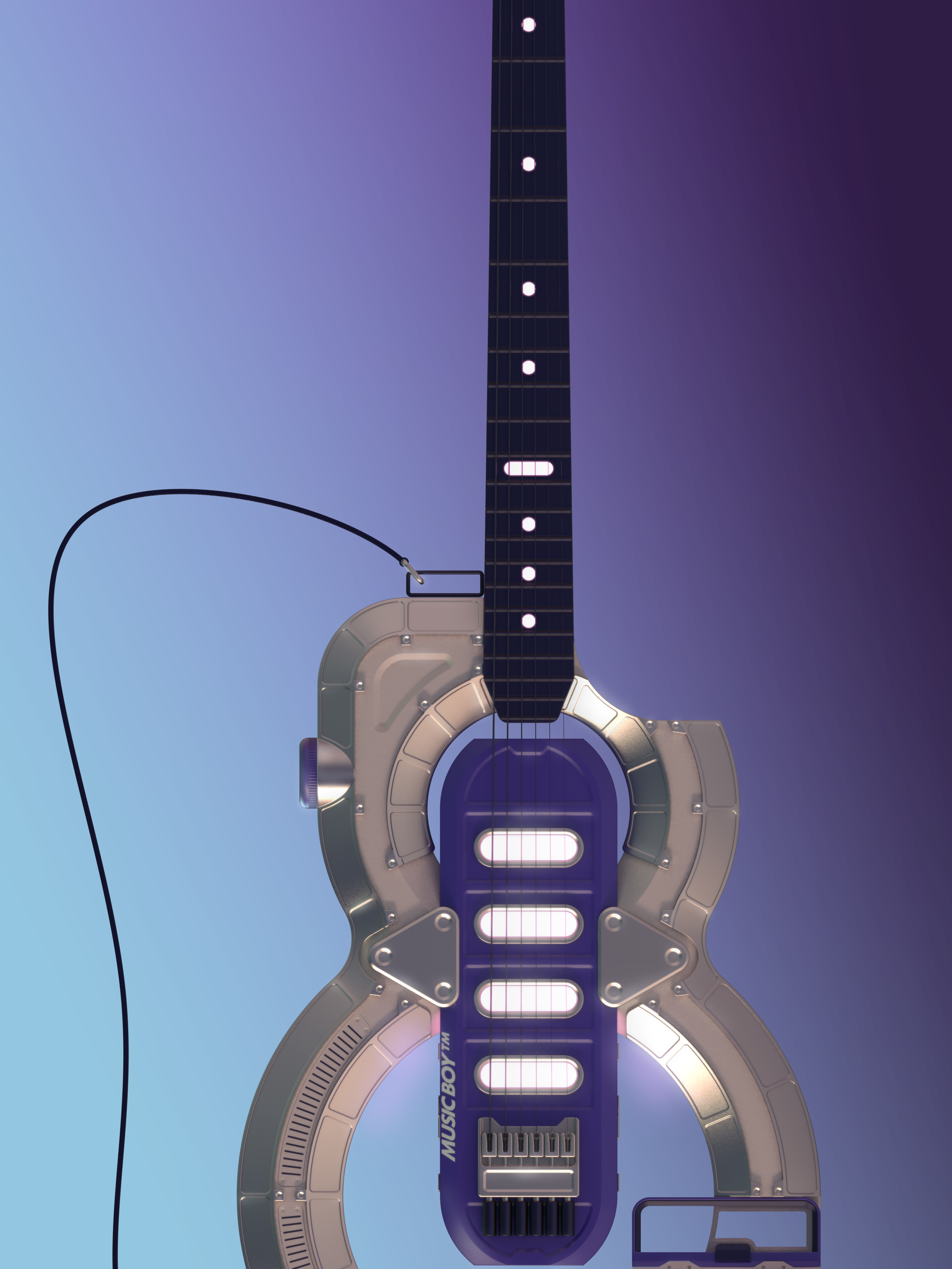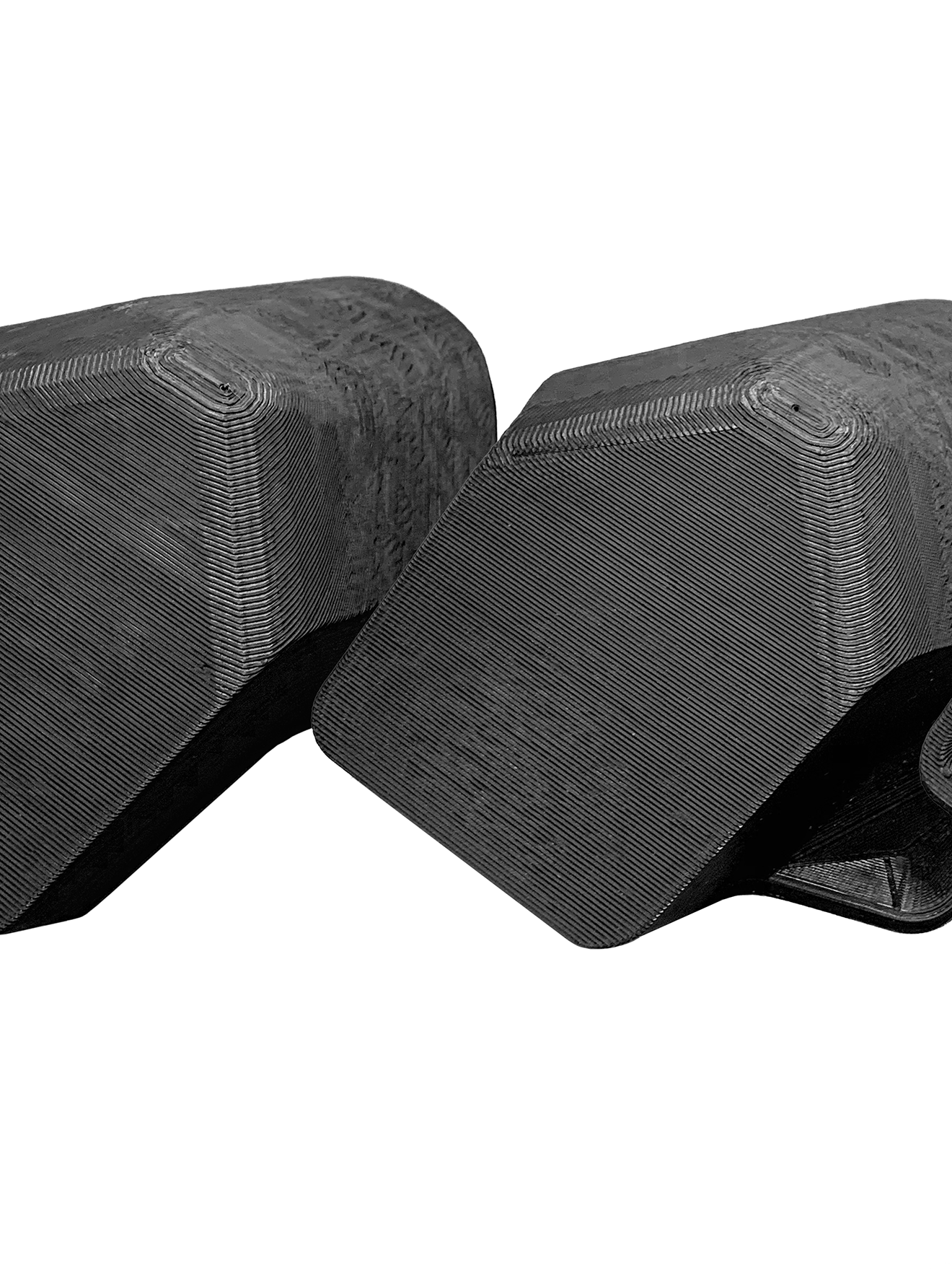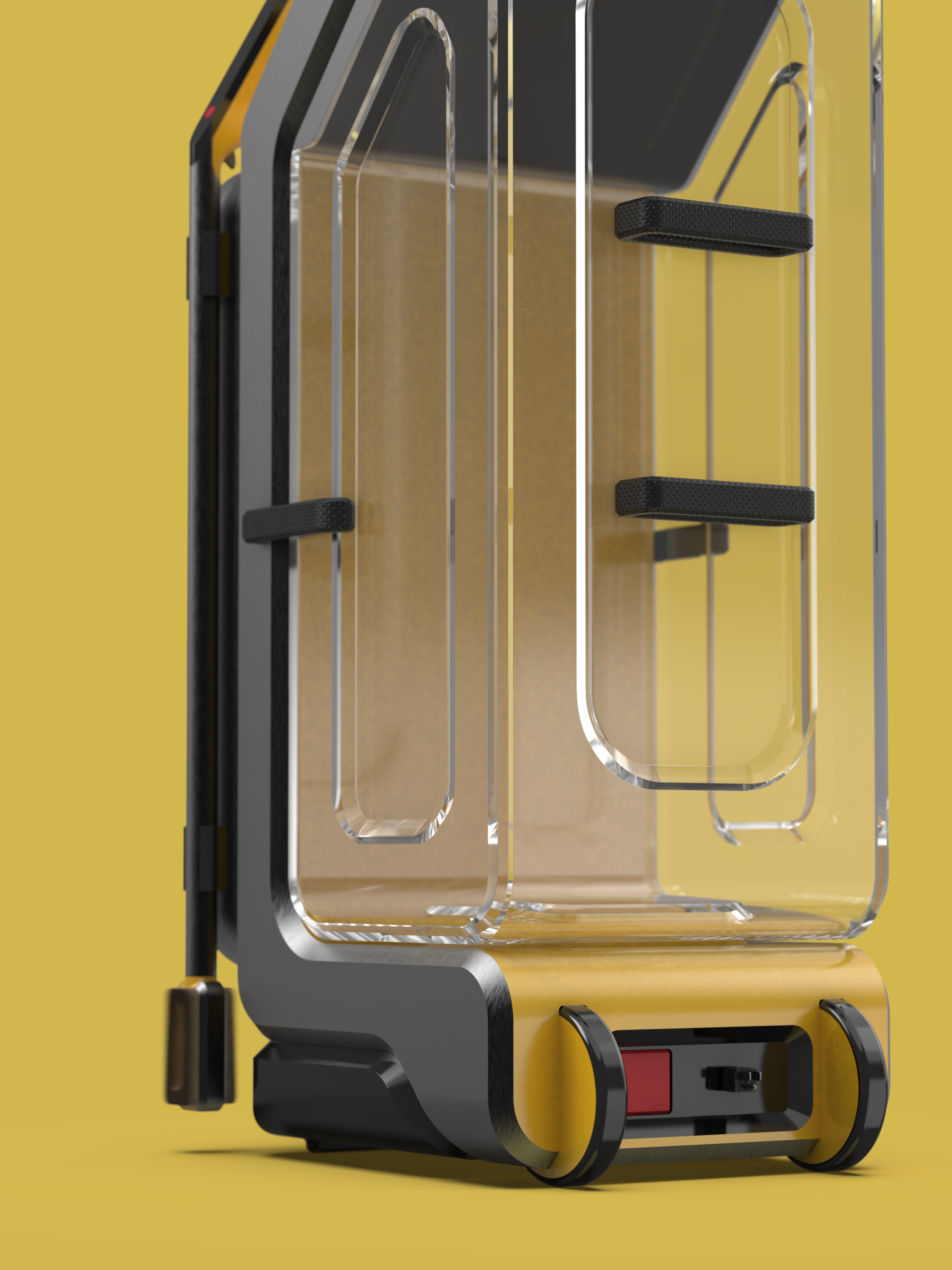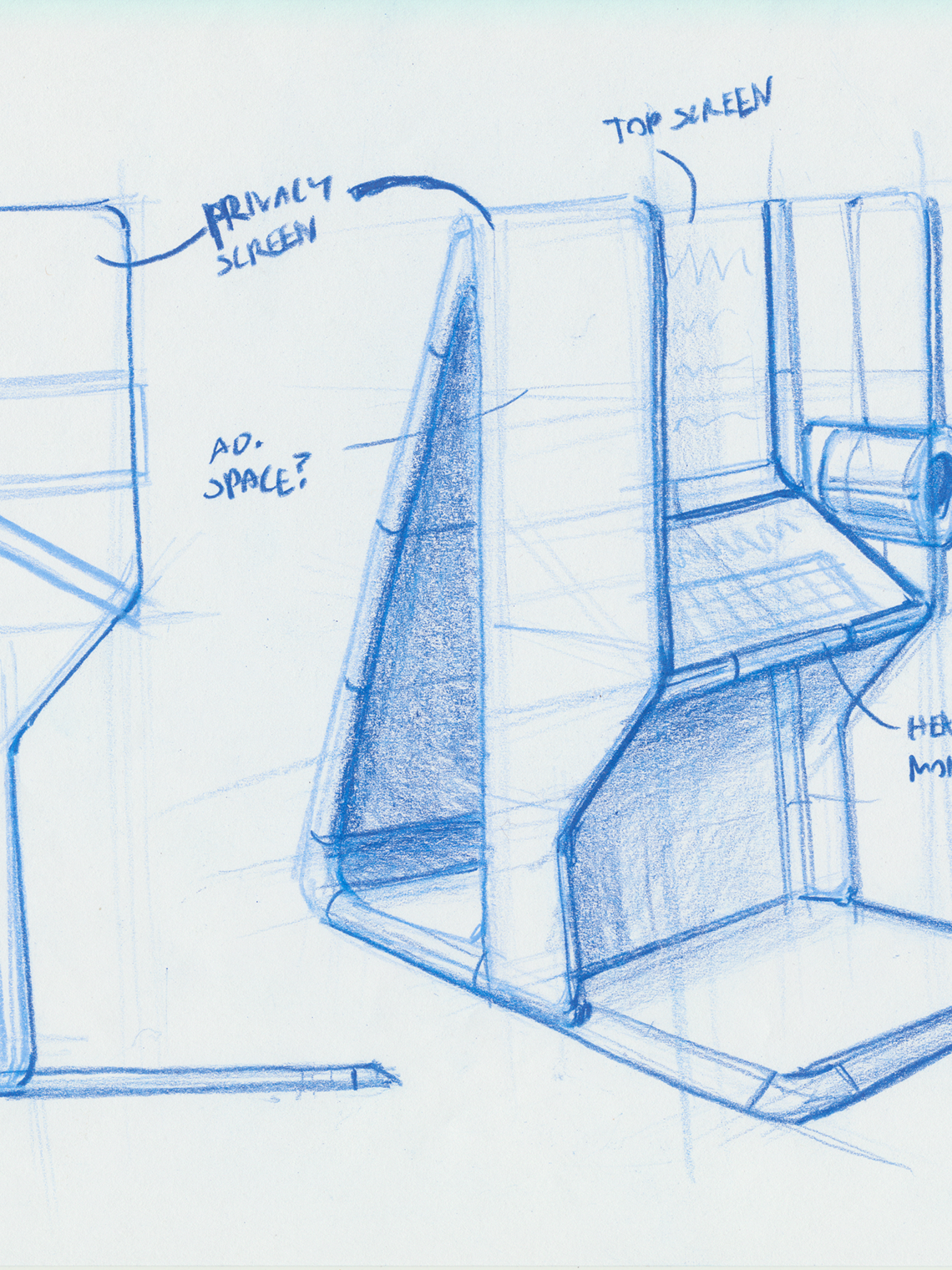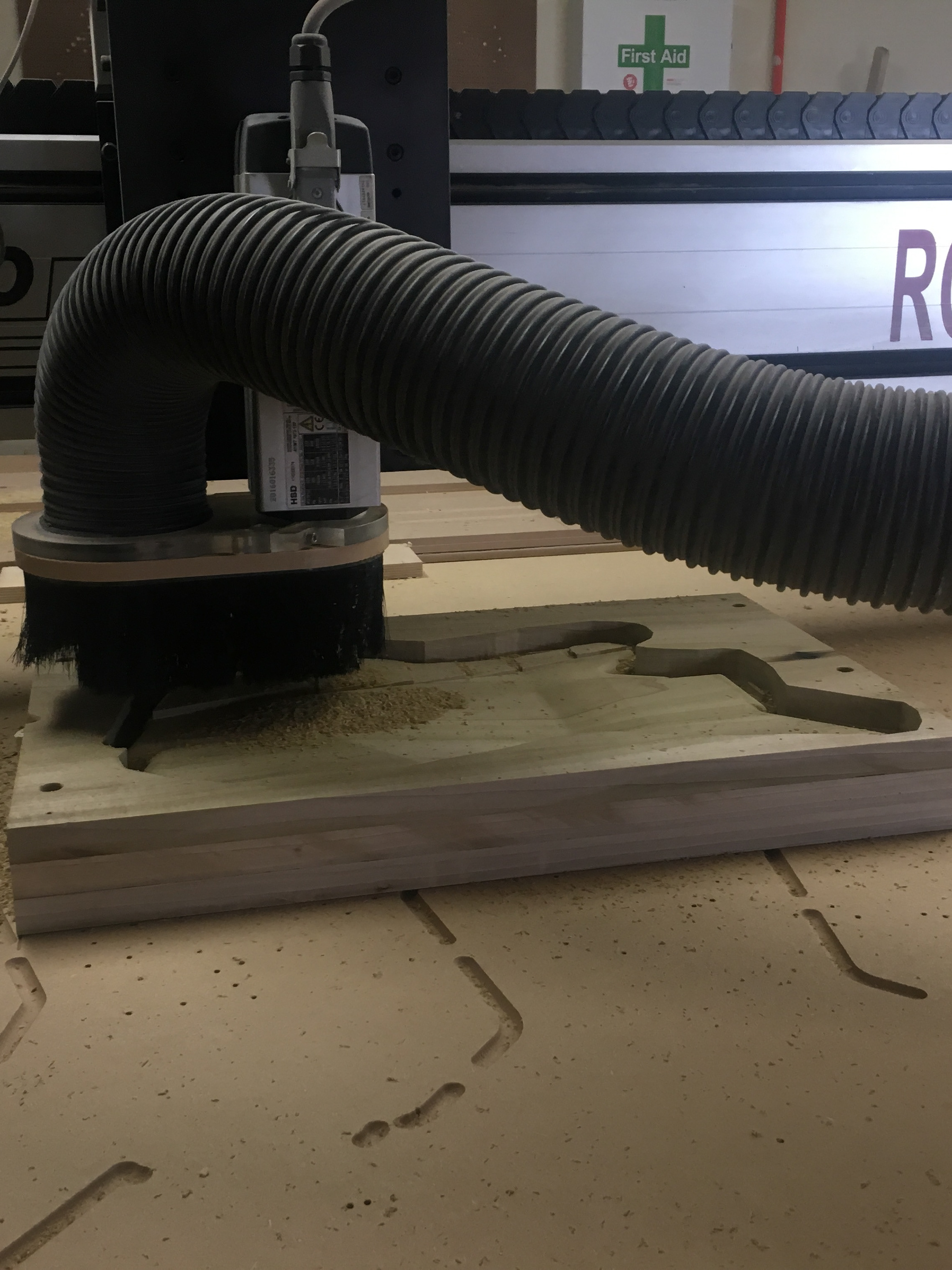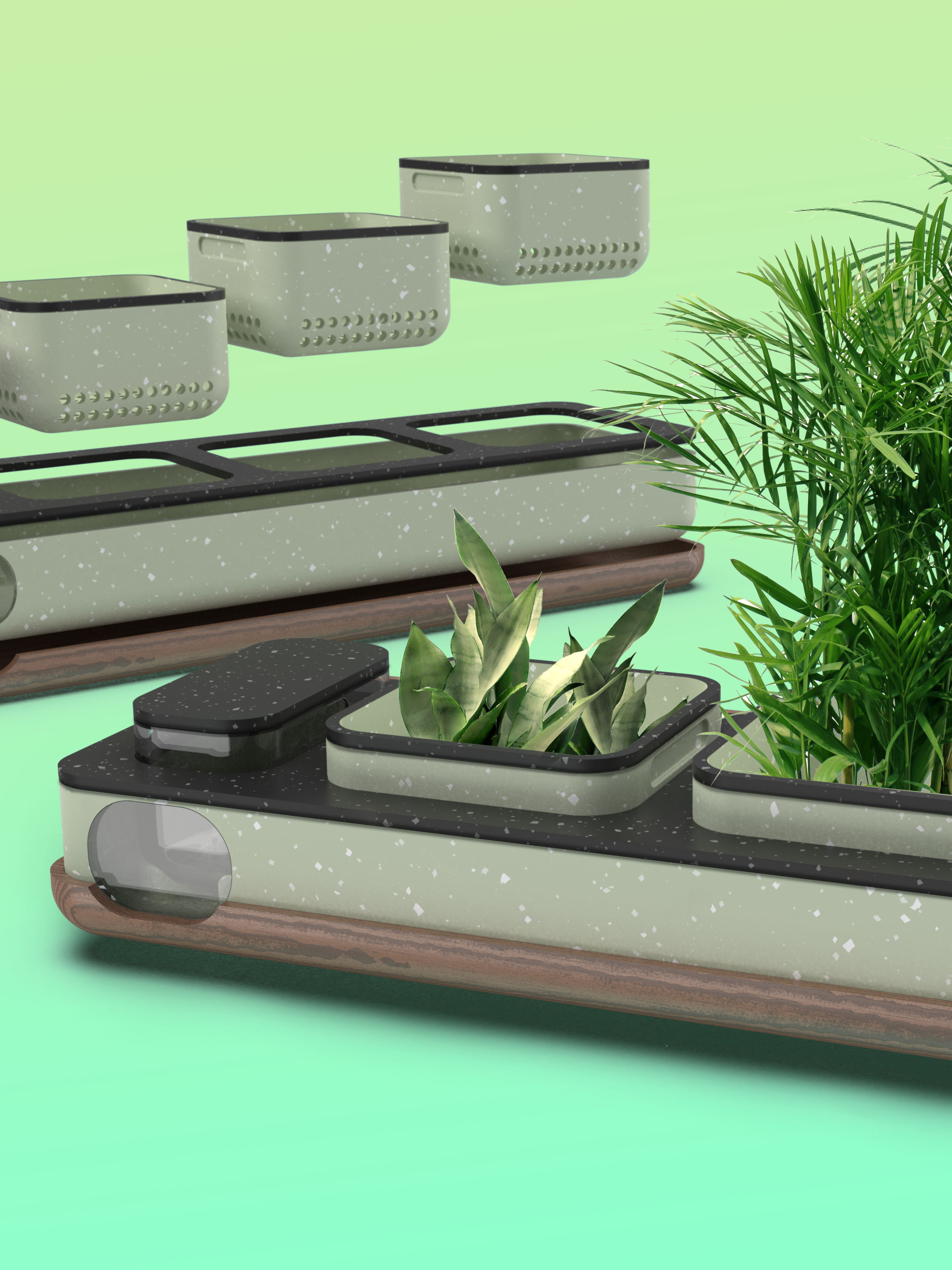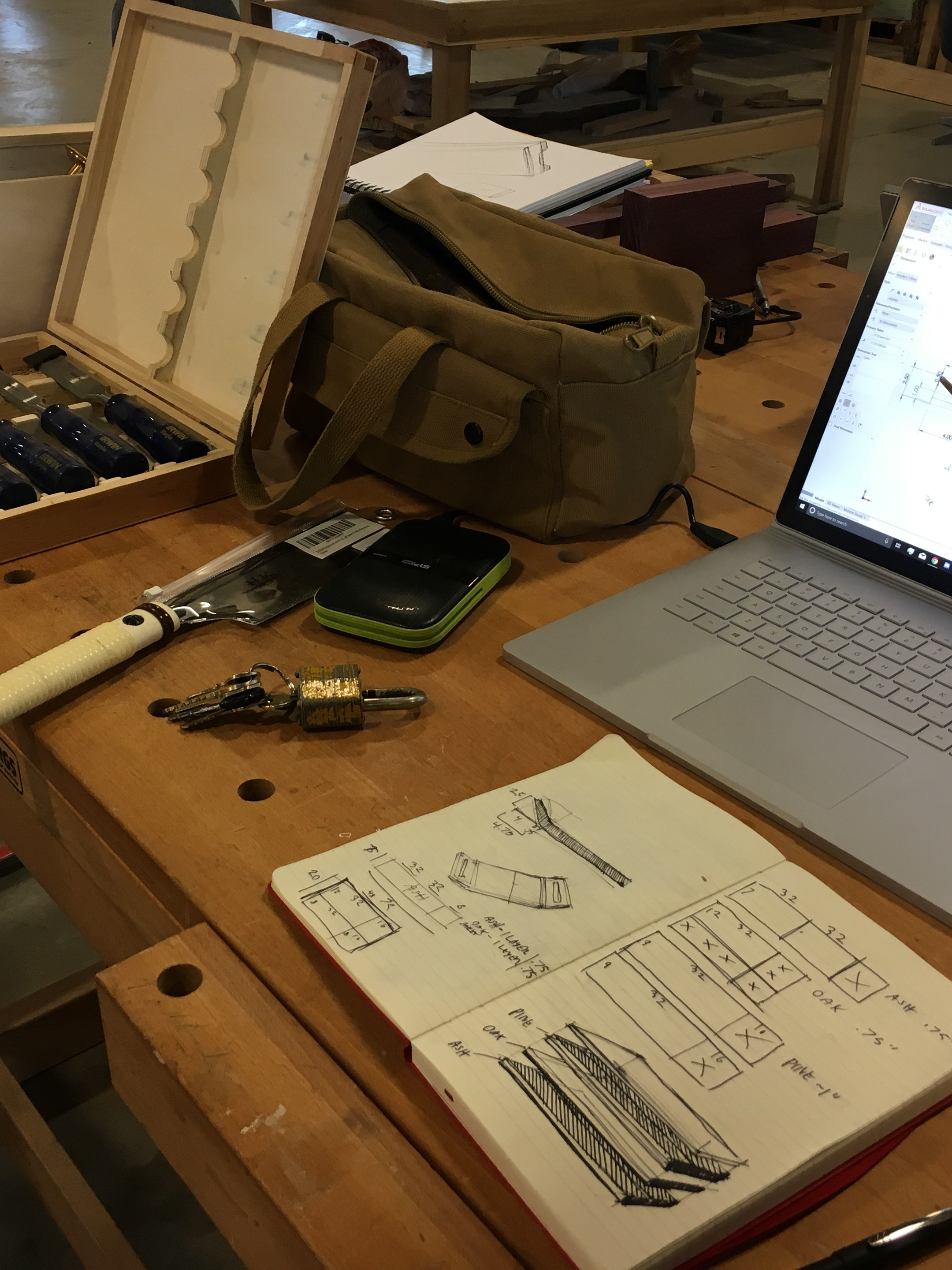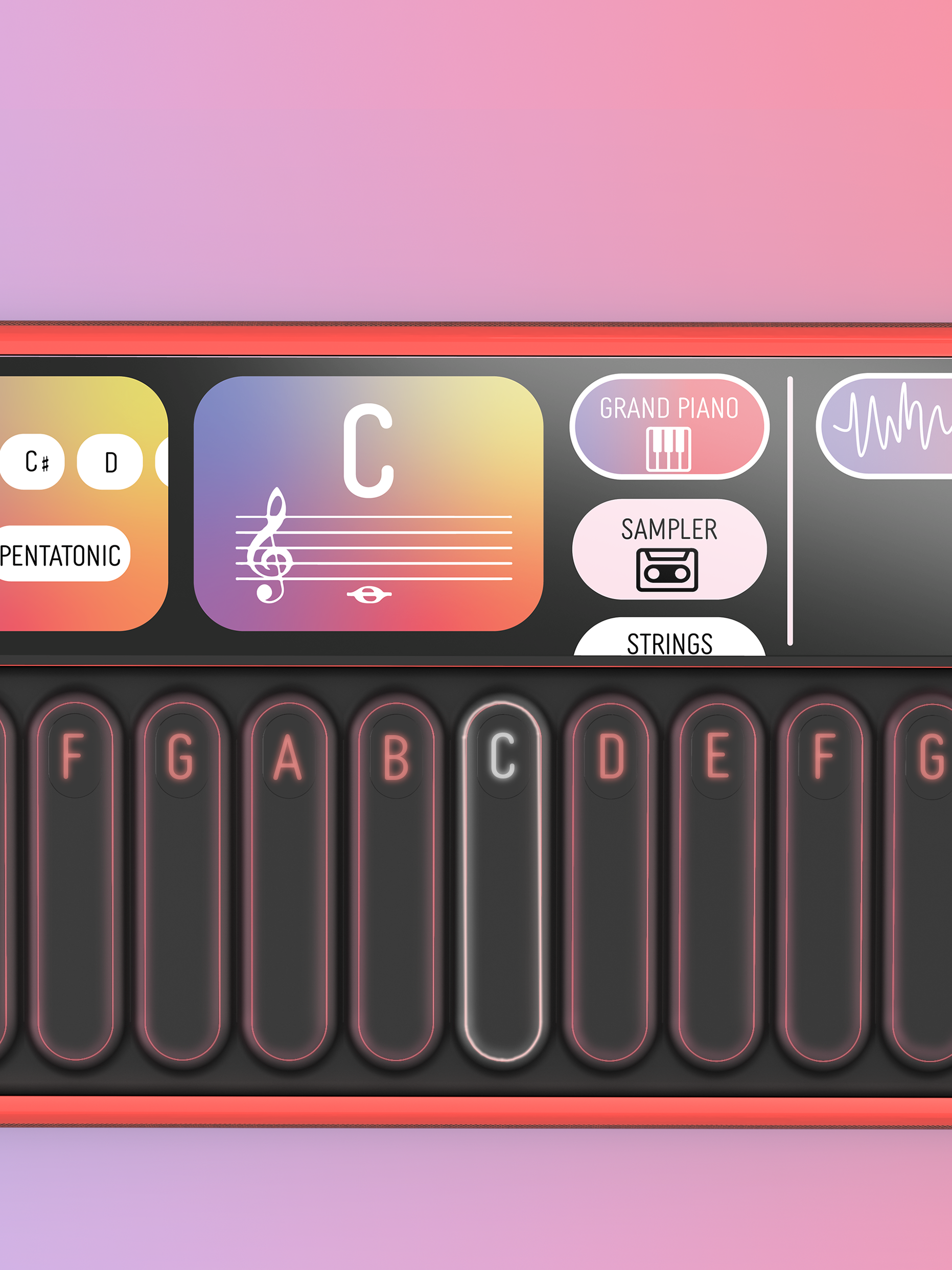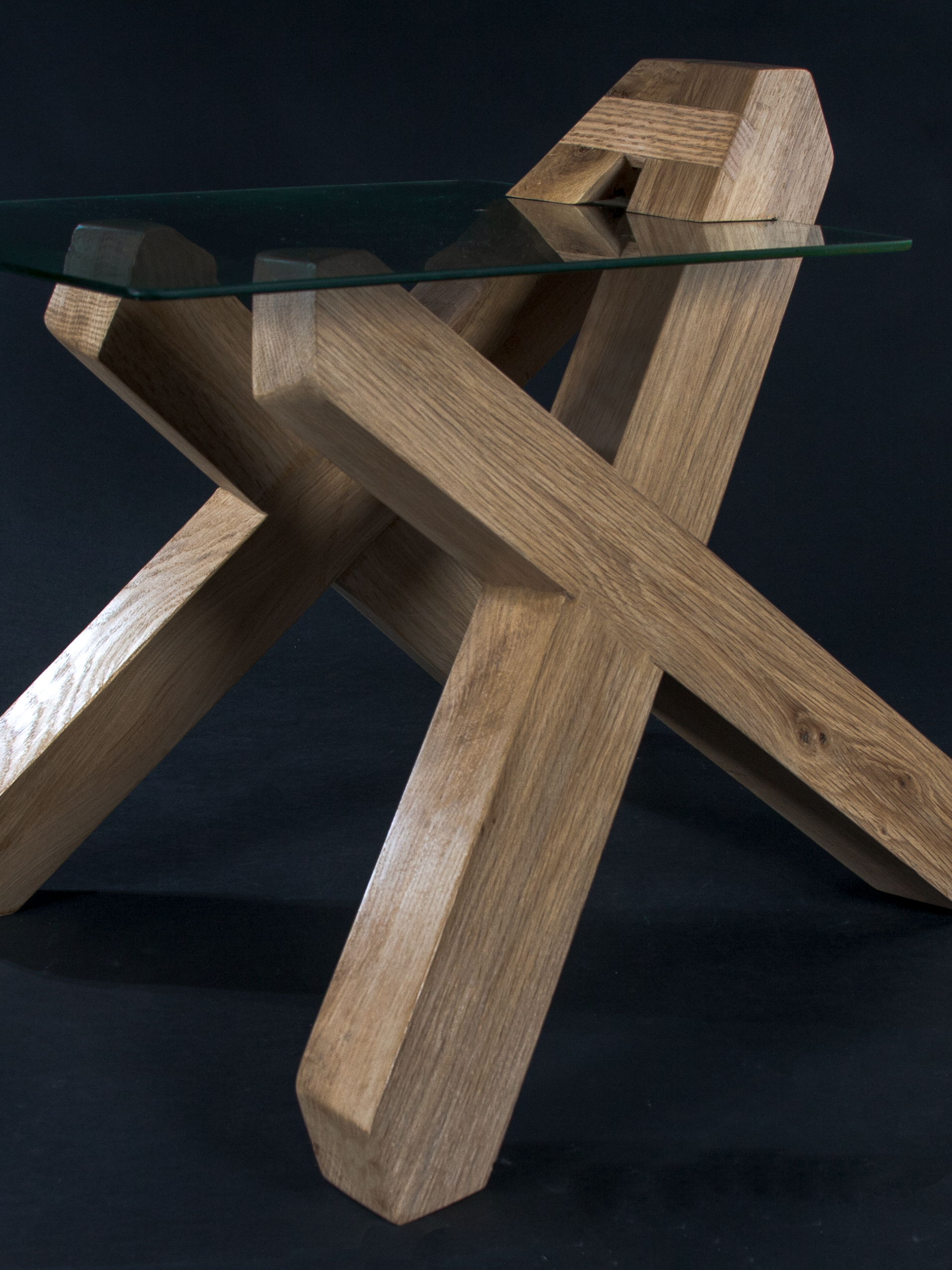
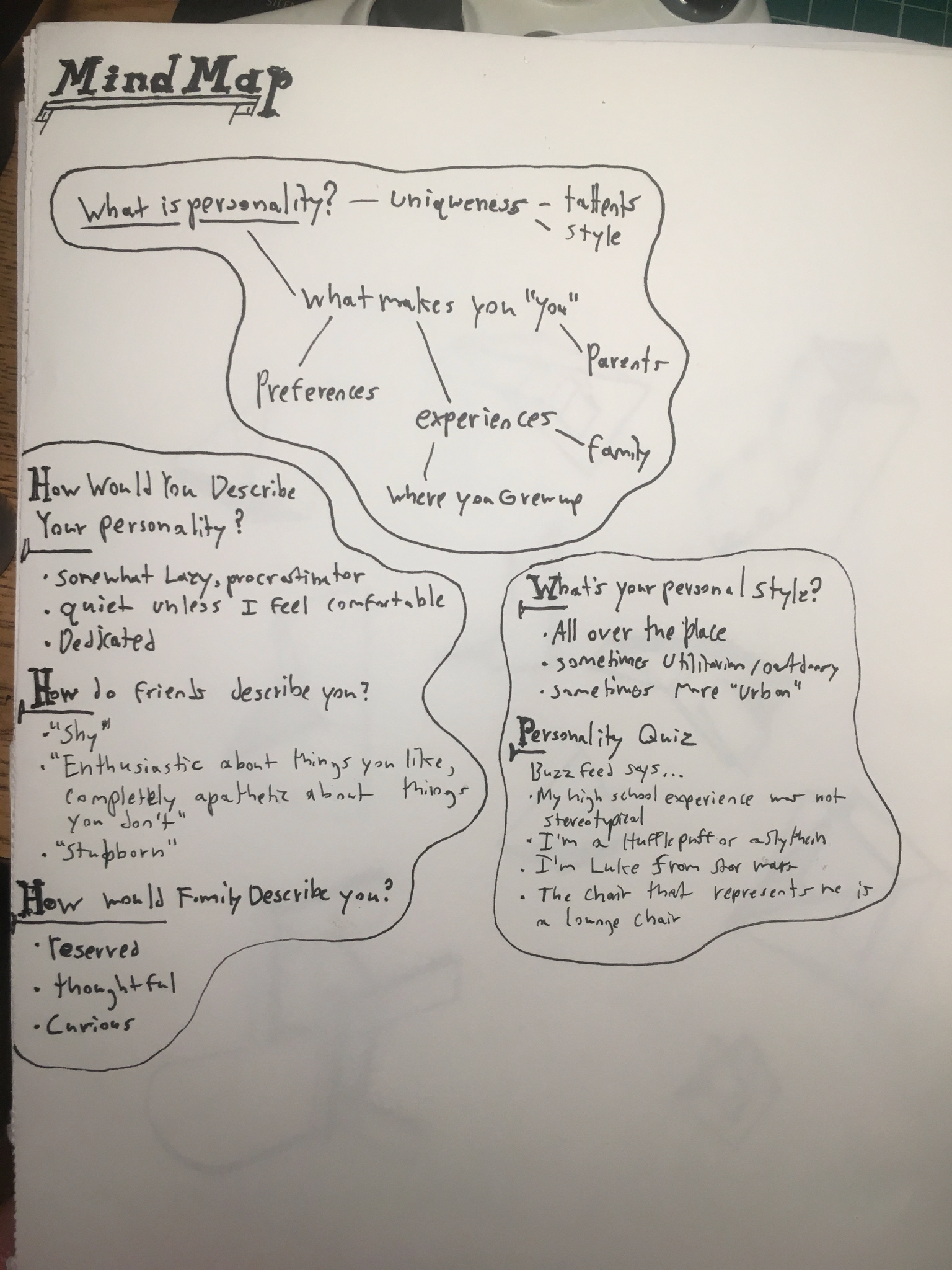
We began the project with a brainstorming session, thinking about the different aspects of seating elements. I started to work out the sort of things I wanted to reflect in my design.






Before starting on the chair, I had to get familiar with the material. I built two toolboxes from cardboard- first from plans provided in class, then another of my own design. This got me familiar with wrapping, scoring, bending, and how the material reacts to different methods.

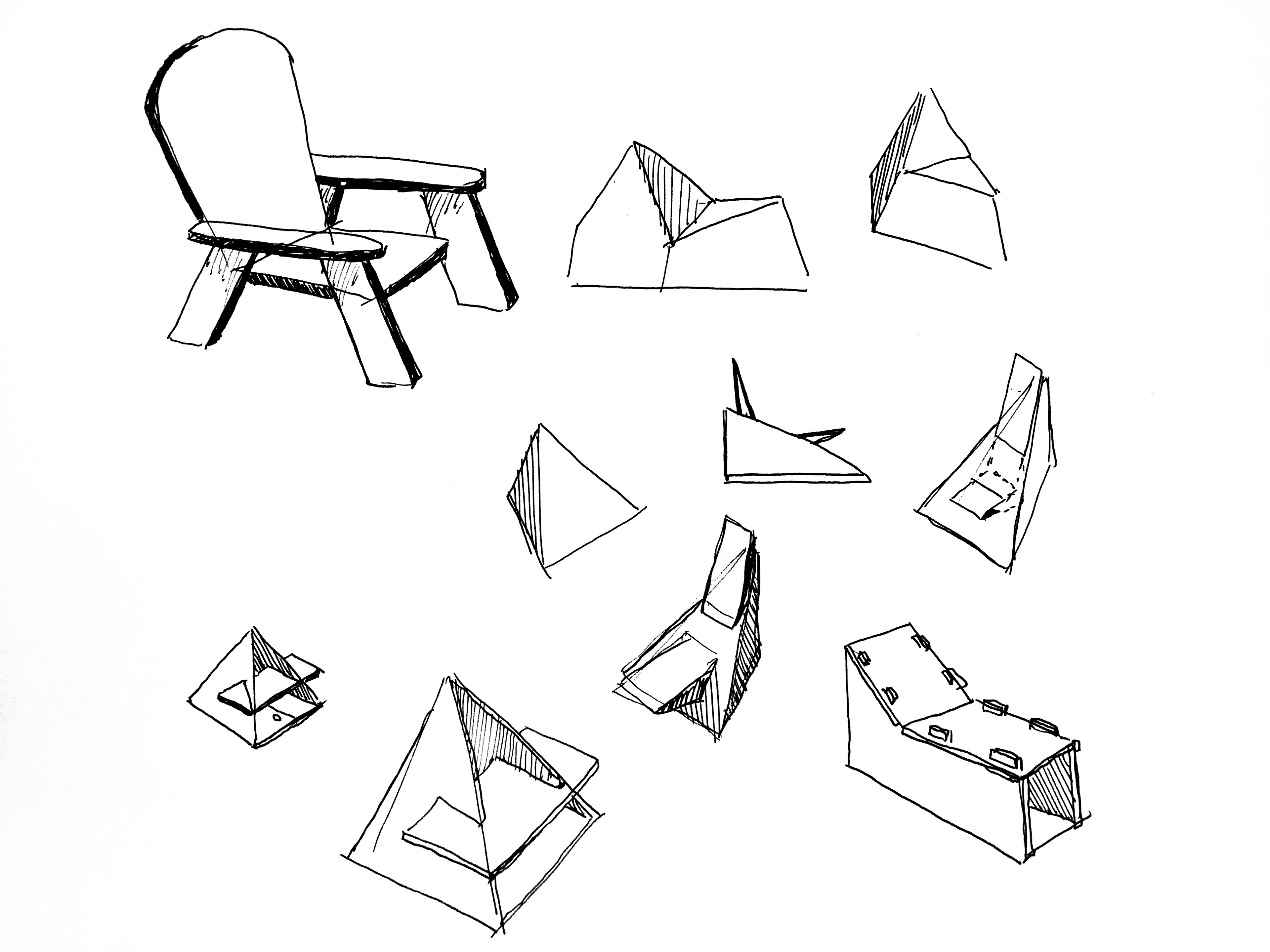
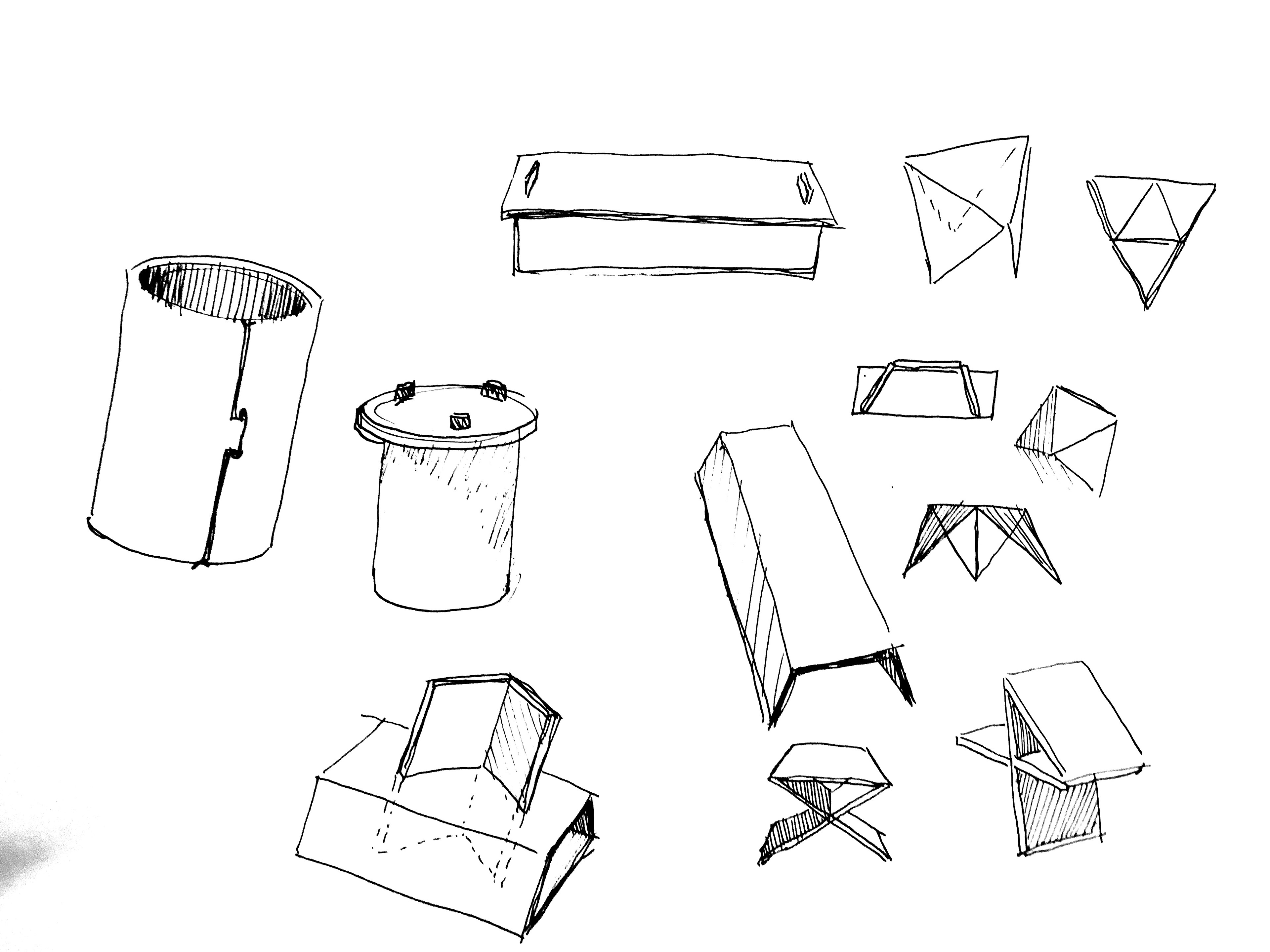



As I started the ideation process for my chair, I thought about both what elements I wanted my chair to reflect and how they would physically go together. I have always been a fan of origami, so I took a lot of inspiration from that. A lot of my first miniatures were simply made by experimenting with how different folds led into one another and created shapes. I ended up being drawn to these forms.








I moved on to scale models, narrowing down my designs. I began to be drawn more towards a lounge chair, Adirondack-inspired design. Although I liked all of my designs, I decided to go with the first one. I enjoyed the idea of how simple it was, with an outside made from one continuous piece of cardboard. I wanted my chair to represent the things I value: relaxation, taking time for yourself, and the outdoors.





Now I had to start figuring out how to build a full scale version. I decided to line the inside with ribbing to make it structurally sound, and created a bottom piece, also a single sheet, that could attach to the top and hold it together.

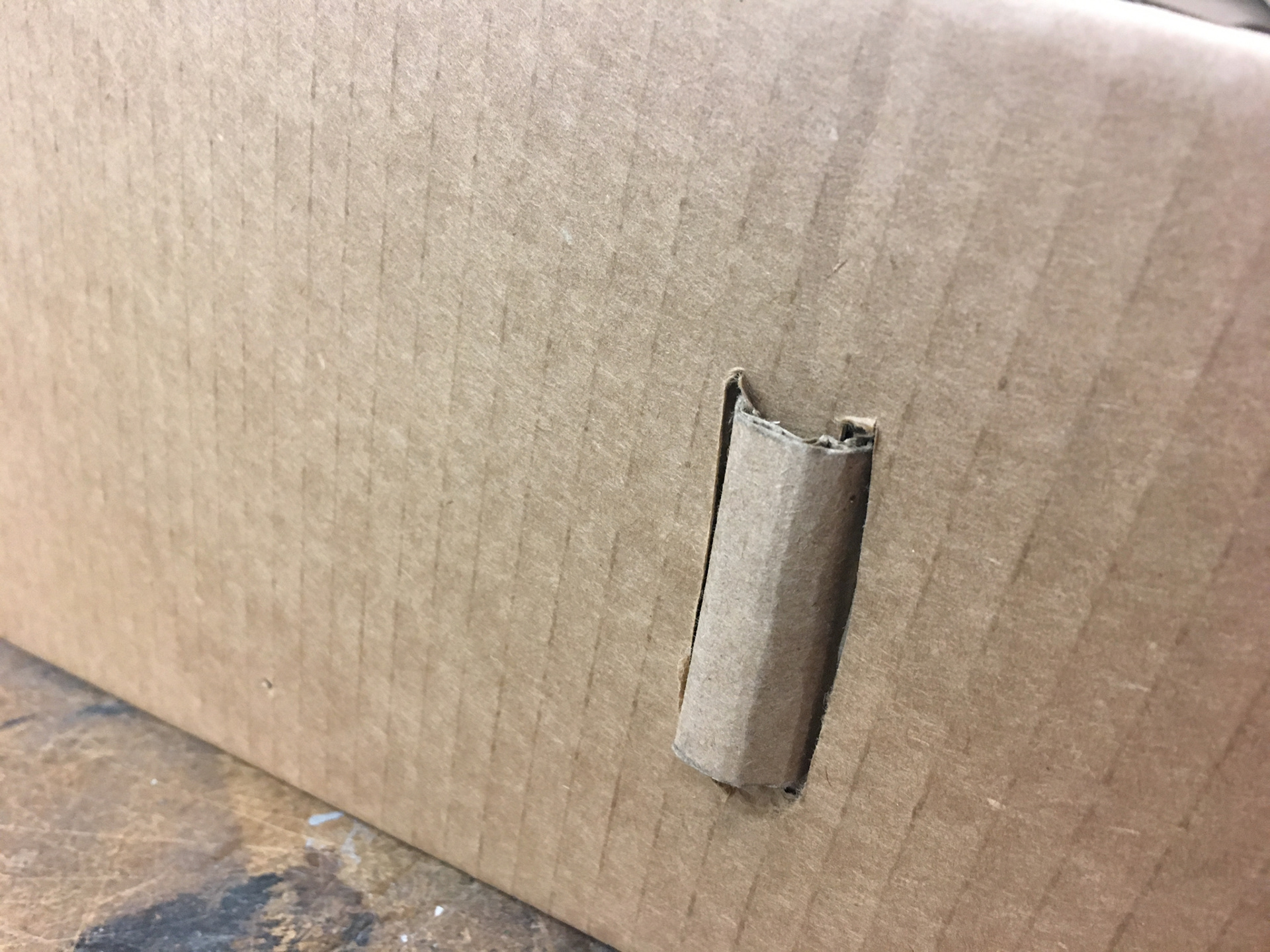
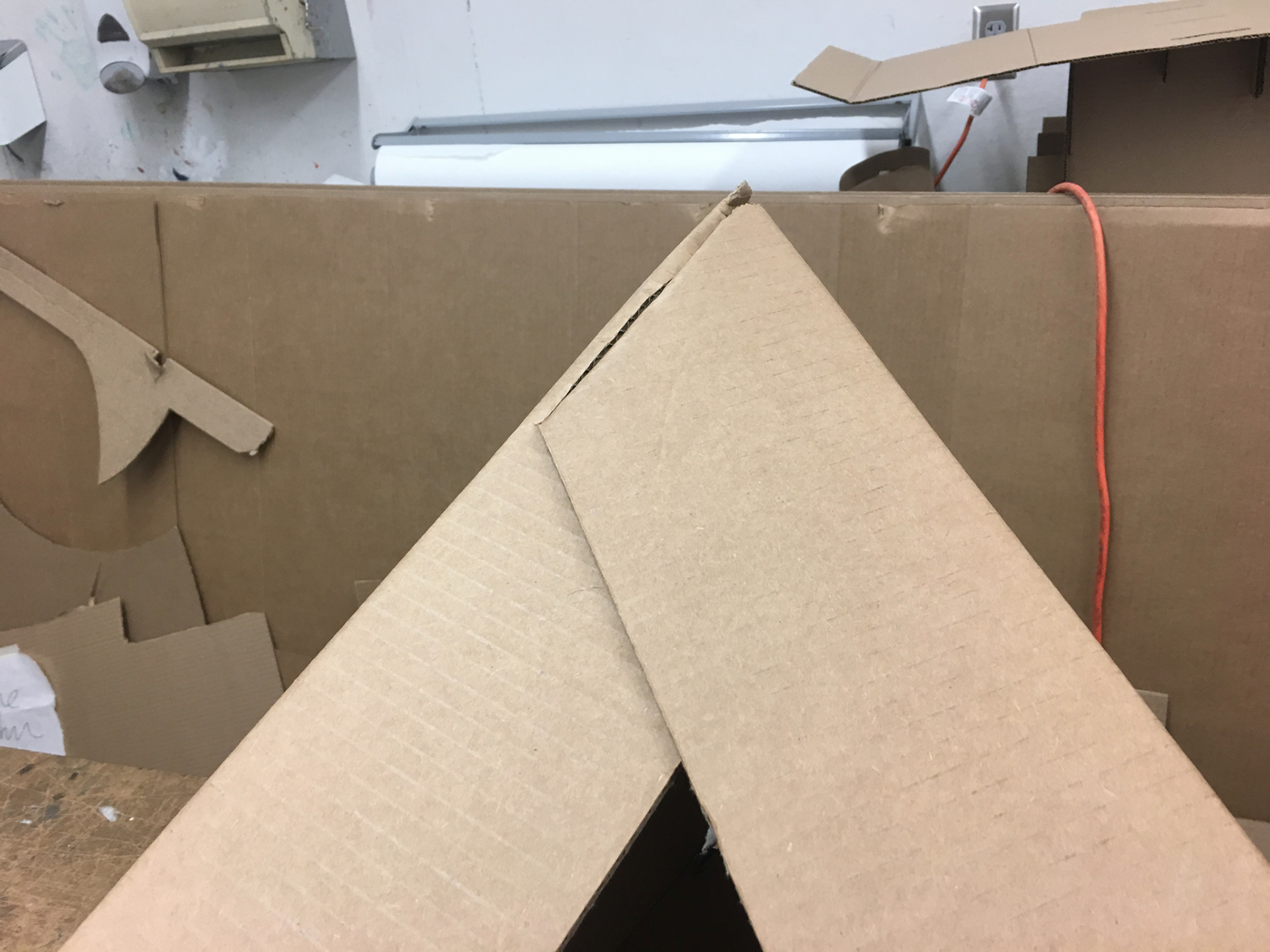





I like to envision this piece, if it were ever put into production, as an outdoors piece. You can lay on it, by yourself, sit on the ends, or whatever you want. To me, it represents the simplicity and freedom of being out in the wilderness, finding rest on a surprisingly comfortable boulder or tree. The dual peaks not only allow a perfect resting angle, but act as a visual allegory to a mountain range or hill.
